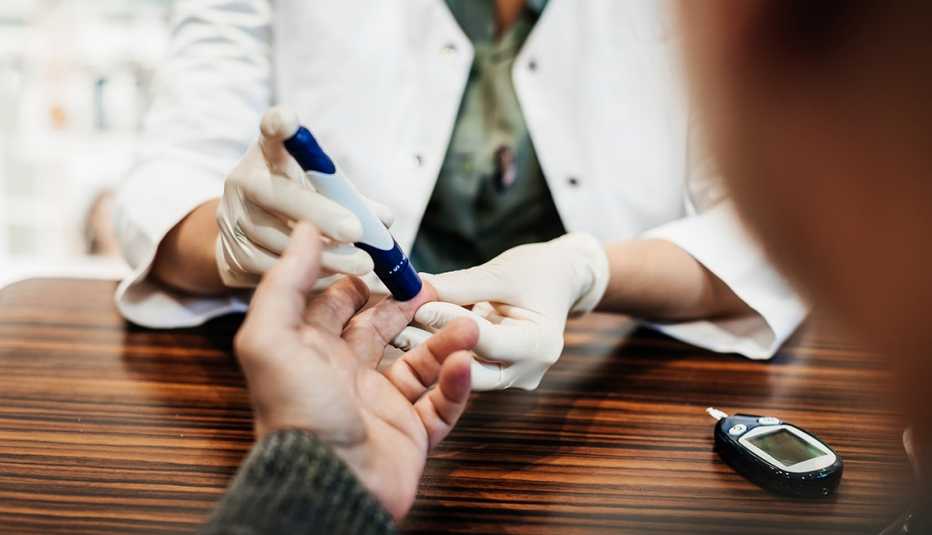AARP Hearing Center


Many Americans are familiar with the hallmark symptoms of type 2 diabetes, such as increased thirst and frequent urination. But doctors say there are several lesser-known signs of the disease, and they sometimes emerge before the typical symptoms.
Becoming familiar with those subtler signs can help you catch the disease early. That’s important because the earlier diabetes is diagnosed, the easier it is to treat and manage, says Mandeep Bajaj, M.D., a professor of medicine at Baylor College of Medicine and chief of endocrinology at Baylor St. Luke’s Medical Center in Houston.
More than 38 million adults in the United States have diabetes, according to estimates from the Centers for Disease Control and Prevention (CDC). Remarkably, 8.7 million (or nearly 23 percent) don’t know they have it, the CDC says. What’s more, about 98 million U.S. adults have prediabetes, in which blood sugar levels are higher than normal but not high enough to be considered type 2 diabetes. About 8 in 10 of them don’t know they have it.
“All of these undiagnosed people walking around with diabetes are at greater risk of complications,” such as chronic kidney disease, heart disease and stroke, as well as nerve, vision and hearing problems, Bajaj says. Research has also linked uncontrolled diabetes with cognitive decline. Controlling your blood sugar through lifestyle changes, medications or insulin injections can delay or prevent those problems.
A primary care physician can diagnose diabetes with a simple blood test. National guidelines call for patients over age 45 to be screened for type 2 diabetes at least every three years, but experts say you should ask your doctor to test you sooner if you have any signs or symptoms or are at higher risk for developing type 2 diabetes.
In addition to excessive thirst and frequent urination, here are some other indicators of diabetes or prediabetes:
1. Chronic yeast infections
High blood sugar from diabetes impairs the immune system, making it harder for your body to fight off infections.
Chronic vaginal yeast infections are particularly common in women with untreated diabetes because the extra sugar in their blood encourages yeast to grow, says Mark Guido, M.D., an endocrinologist with Novant Health Forsyth Endocrine Consultants in Winston Salem, North Carolina.
Other types of recurrent infections — such as skin, bladder and urinary tract infections — can indicate diabetes.
Bajaj says primary care doctors don’t always think about the link between chronic infections and diabetes. If you have repeat infections, he recommends that you ask to be screened.
2. Blurred vision
If it seems like you need frequent updates to your eyeglass prescription, you may want to get tested for diabetes. When your blood sugar levels change quickly, it can cause the lens of your eyes to get cloudy or swell, creating blurry vision.
“People think they need to change their glasses, but actually it may be a sign of diabetes,” Bajaj says.
If left untreated, diabetes damages blood vessels in the back of the eye and can cause cataracts, glaucoma and blindness.




































































More From AARP
7 Habits That Increase Diabetes Risk
Watch out for skipping breakfast, sitting for too long and other harmful behaviorsWhat to Do After a Diabetes Diagnosis
7 simple changes to improve your life
How to Remove Skin Tags Yourself
Some methods are safer than others, and a visit to the dermatologist may be best